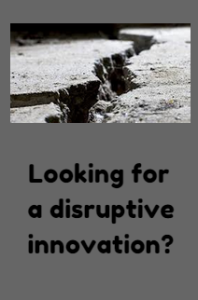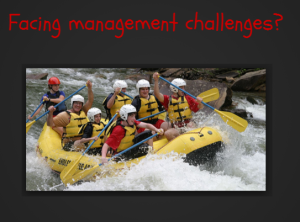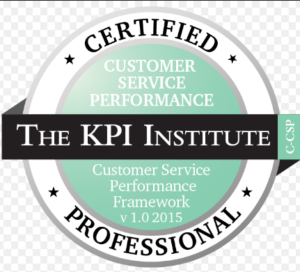Is your decision to be an entrepreneur what you will settle for, like Janis said? Or are you just having trouble finding the decision?
You are what you settle for.
–Janis Joplin
Think of a business idea … one you keep coming back to. One that you can never seem to get off the ground. Or, maybe you’re struggling with the final considerations for going into business for yourself. You find yourself in limbo.
To get unstuck and finally make a firm decision, consider these six areas that play into the decision to settle as an entrepreneur:
Evaluate Market Opportunities
Selecting a market segment and how you can discriminate your business are the most important decisions you must make before deciding to open a business.
If there are too many competitors (some irrational or inexperienced), even if you’re the best, it’s a lot harder to be a success.
If you don’t have discrimination, don’t plan on competing. The very best decision you could make under these circumstances.
Act weak when strong, act strong when weak. Know when you should not be bluffing (mostly all the time).
Don’t let your ego destroy your talent. Learn to be humble.
Your “brand” is important. What characteristics of your personality do you wish to reflect? Brands definitely need a personality. If you have limited personality, you will be behind the eight ball at the start.
Help shape the stories that people are telling about you. Stories are the best way to connect emotionally to your customers. And the best way to market your products and services.
Trust that you know what to do
If you’re doing endless research to find the “right” choice, give it a rest. When making more complex choices, we do better when we go with gut instincts, rather than weighing all the variables. Your intuition unconsciously takes into account all the information available to you, including your values and goals, and is likely to guide you to the best choice.
If you’ve lost touch with your intuition, give yourself space to find it. Take a walk, get a spa treatment, or play basketball with your friends — whatever you find relaxing and enjoyable. Be patient. You will reconnect eventually.
Always be prepared for the worst case scenarios and put some of your capital aside for one or two. Go for positive expected value, not what’s least risky. Make sure your cash is large enough to meet a conservative business plan.
Do not risk investments that you cannot afford to lose. Remember it’s a long term game. You will win or lose individual components of your business in the short run, but it’s what happens in the long term that matters. Be persistent and patient.
Business Tactics
Don’t use business tactics that you don’t understand, even if you see lots of other businesses making money from them. Make sure you understand the business model and rules before you start.
Stick to your principles, but be prepared to adjust your business style as the dynamics of the market change. Be flexible and don’t fear change.
Be patient and think long term. The businesses with the most stamina and focus usually win, so stay focused on your goals.
Remember hope is not a good plan.
Continual Learning
Educate yourself. Read books and learn from others who have done it before. Find a good mentor who knows the ropes.
Learn by doing and always experiment with small tests. Rarely if ever bet large amounts without small testing first. Theory is nice, but nothing replaces actual experience.
Learn by surrounding yourself with talented employees, start slowly with hires and don’t be afraid to let bad hires go quickly.
Never be afraid to ask for advice from your mentors and others in your network. Continuous learning is the key to long term success.
Establish a Company Culture
Don’t be cocky. Don’t be flashy. There’s always someone better than you.
Be nice and make friends … become a key part of your community. It’s not a large community. Share what you’ve learned with others … play it forward.
Look for opportunities beyond just the market you entered. You never know who you’re going to meet, including new friends for life or new business contacts. Learn wherever and from whomever you can.
You’ve must love what you are doing. To become really good, you need to live it and sleep it. Have fun. Your business is a lot more enjoyable when you’re trying to do more than just make money.
Are you devoting enough time and energy to your decision to be an entrepreneur? Considered each of these decision factors?
Do you have a story about your career decision making you can share with this community? Have any questions or comments to add in the section below?










